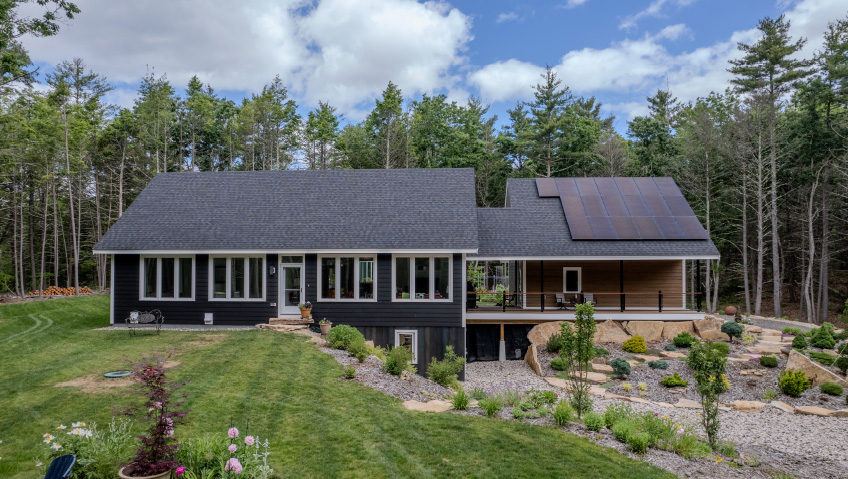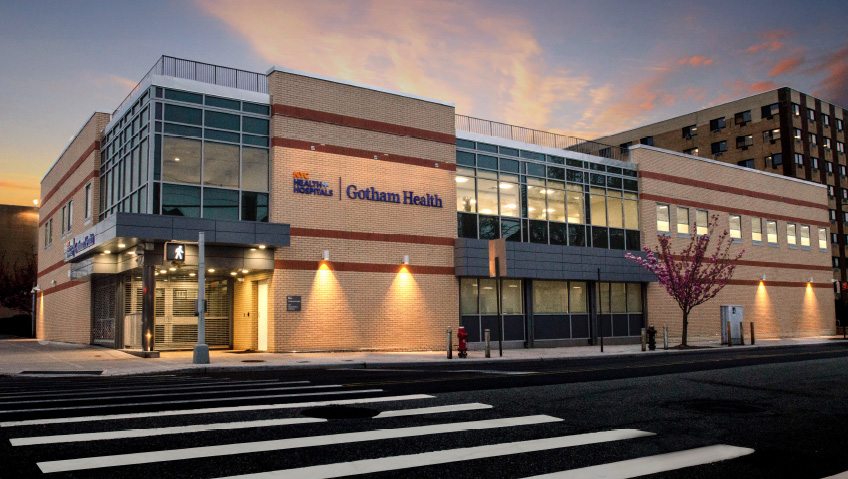Based in Portland, Maine, BrightBuilt Home is a design firm that gives end users easy access to high-performance net-zero homes across the state and beyond. Staffed with experts specializing in diverse areas, these thought leaders are well known for being fantastic at what they do. By using existing fabrication infrastructure and providing guidance and education to assist more people in owning energy-autonomous homes, the company gives new life to the concept of off-site housing production.
Moreover, BrightBuilt is exceptionally generous in the volumes of information it shares with the public on this building modality. By assisting clients in calculating costs and budgets based on existing or customized designs, BrightBuilt removes the guesswork from what can sometimes be a complex process. “We were founded on the premise of broadening access to these high-performance, net-zero homes,” says Parlin Meyer, Principal.
From BrightBuilt, clients receive well-designed, modern custom homes that answer their exacting needs. More than just good-looking, these net-zero homes are based on solid building science and building methods and materials of outstanding quality.
The company’s homes are also fully self-sufficient from an energy perspective, supplying all the electricity a standard household needs from rooftop solar arrays. “There are a lot of merits to building off-site that we firmly believe in,” Meyer says. “We do our best to be a trusted resource for the marketplace.” In the process, the company stimulates a lot of conversation around the discipline, helping to engage people and build awareness through online platforms like webinars that are open to absolutely everyone.
These webinar sessions are stored for future reference, contributing to an already significant and valuable online resource. In addition, the company sends out a newsletter highlighting helpful information that covers technical subjects about the building science that defines high-performance home ownership. Topics cover a wide range of topics, including mechanical systems like air-source heat pumps and much more.
In addition, BrightBuilt hosts monthly open-house events where curious potential buyers and members of the public are welcome to experience the joys of high-performance net-zero homes firsthand. “With the constant air exchange and regular flow of pre-filtered fresh air into the house, people have remarked that they can… tell the difference,” Meyer says. Adding to the experience are team members positioned in and around the house to answer any questions visitors may have.
As a team of net-zero design experts, the company has an extensive network of relationships in the off-site housing production industry. “We have an impressive network of general contractors with whom we pair clients to come to us so that they can complete a home from start to finish,” she adds. As a result, the entire design-build process becomes one of reaching for a better future, energy-wise.
While there is a lot of information to navigate, the BrightBuilt team supports clients every step of the way. “We try to create a very clear roadmap for the process and also help serve as a representative for the clients,” she says. In the role as client representative, it is also responsible for ensuring designs align with homes’ projected performance requirements to render net-zero dwellings.
To the uninitiated, off-site housing production may appear like a strange choice to achieve a net-zero home. Yet, the visionaries at BrightBuilt came to their approach based on the number of advantages the model offers. Firstly, homes are essentially complete by the time they are delivered, and inclement weather does not adversely affect material quality or slow down the construction process. As homes arrive tightly sealed against the elements, no time or money is wasted on damage caused by rain, wind, or snow or trying to work around the elements.
Climate-controlled assembly also means material stability, ideal in regions where swelling and contraction of materials can cause a host of secondary challenges. Naturally, the indoor building process is also infinitely easier for the people doing the building. In addition, fabrication happens in tandem with site preparation and so, by the time the house is ready for installation, the site is cleared and ready too.
This expedited timeline is a win for all involved. Clients benefit from only having to foot the bill for a fraction of traditional building timelines, while general contractors can move on to their next projects sooner; all firms involved can complete more jobs annually on such sites than with any other building modality.
BrightBuilt Home’s approach to building is thorough and there’s no skimping on material quality or quantity, making overall material costs comparable to standard building. The walls are thick, the windows are triple-pane, and therefore savings are incurred mainly on the time saved by building off-site. Long-term ownership costs are of course significantly reduced through such a home’s energy production and overall net-zero functionality. By using air-source heat pump technology, cooling and heating of ambient air and water is exceptionally energy-efficient. “Your utility costs and your costs to operate the home are virtually nothing,” Meyer explains.
But it gets even better. While material costs may be slightly higher on these homes, BrightBuilt’s energy systems do not typically send capital outlay soaring beyond that of a traditional set-up. “It ends up saving you money to build a home which is slightly more expensive at the outset,” she says.
With its sights set on growing its reach into the greater New England region and further afield, the company also recently moved into a new office space. Continuing to build on existing and new relationships with contractors and other service providers, this star matchmaker ensures that customers benefit from collaborating with trustworthy teams. And another refreshing aspect of the company’s ethos is its commitment to blending its designs with their surroundings.
As a result, BrightBuilt’s designs reflect local vernacular aesthetics, rendering homes at ease within their locales. “[Vernacular design is typically] borne out of the conditions in this region,” Meyer says of the deep overhangs, steep roof pitches, and other elements typical to the Maine area. Its south-facing designs are also characterized by ample windows, making for bright, sunlit spaces whenever the weather allows.
Having worked as far west as Pennsylvania and as far south as Virginia, the company has an acute awareness of what sets these areas apart in terms of weather, design, and the variations in building materials and methods used to adapt to each region. Although the firm focuses on Maine’s overall style when designing for this area, the team does consider the traditional and modern approaches of other regions it works in. Similarly, it employs contemporary design whenever clients request it.
As interest in such styles grows, the team adapts to answer that demand. It also continues its strong focus on building relationships with vendors and other parties in these industries to ensure that collaborators align with BrightBuilt’s core values. For this reason, the team has strong connections with builders who specialize in less common materials—modern takes based on old-fashioned concepts, like avant-garde zip “sandwich” panels engineered from strawbales.
As if these materials were not exciting enough in and of themselves, their contributions to reducing the carbon footprint and improving the carbon-capture opportunities of these homes are even more impactful. “We are… always trying to innovate with the materials that we use for our homes and with our approach in general,” Meyer says, highlighting that affordable innovation is a big consideration in the firm’s designs.
One example of its commitment to innovation is the small annexes it has been designing for people needing small, separate dwellings on their properties to accommodate extra occupants. The team is meeting this niche with great enthusiasm; aligning the optimal use of space with low carbon signatures and energy autonomy—all within a set budget—poses a unique challenge. “We have done a number of those that have definitely been sources of pride for everyone on the team,” Meyer shares.
Designing for the end user defines good design, she says, and that means BrightBuilt designers listen to their clients, delivering beauty that serves the final purpose rather than the creative whims and “architectural will” of somebody who will never live in these buildings. Ultimately, making the design and building processes as simple and enjoyable for clients as possible is a key factor that informs many of the work systems the company runs on.
BrightBuilt’s goals are numerous. Taking its offering to new regions while continuously working on new ways to maintain quality and keep these homes affordable, the company is excited about its foreseeable prospects and its contributions to local landscapes. Potential options for achieving this include creative possibilities like offering complete home kits and other innovative ideas. As Parlin Meyer says, “While we will continue to offer what we have always done historically, we want to continuously create new pathways for attaining these homes that are more and more accessible.”






